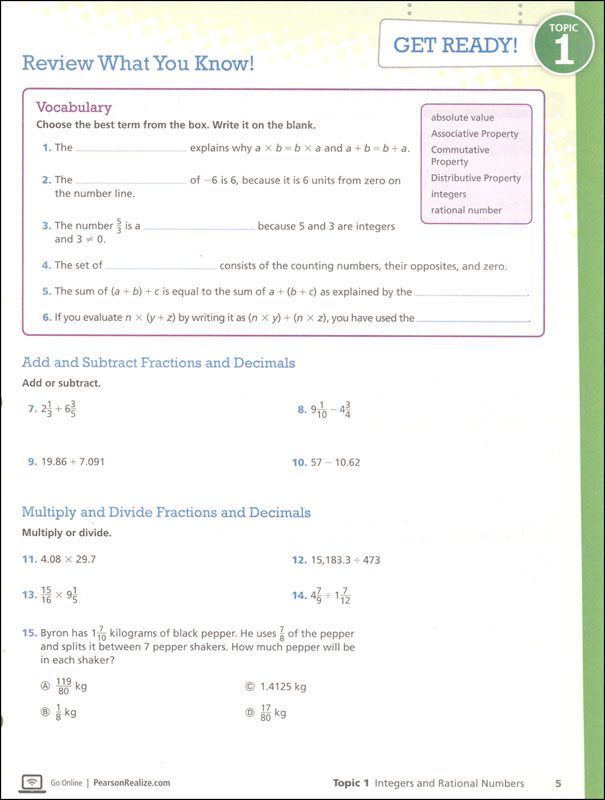Have you ever stared at a math problem, feeling like the numbers are dancing a confusing jig before your eyes? Perhaps you’re a parent desperately trying to help your fifth grader navigate the world of fractions, decimals, and geometry, but the familiar comfort of your own elementary school math days feels a world away. Don’t worry, you’re not alone! ThinkUp Math, a popular curriculum used in many elementary schools, is designed to build a solid foundation in math, but sometimes, even the most well-intentioned student needs a little extra support.
Image: micheladavina.blogspot.com
This is where an answer key can be a valuable tool. Having access to the answers can help students check their work, identify areas where they’re struggling, and build confidence as they progress through the material. But it’s important to understand that an answer key should be used strategically, not as a crutch. It’s not about simply getting the right answer; it’s about understanding the *why* behind the solution.
Navigating ThinkUp Math Level 5: A Comprehensive Guide
ThinkUp Math Level 5 covers a variety of essential concepts that form the backbone of later math studies. Let’s delve into some key areas and the types of problems you might encounter:
1. Number Sense and Place Value: Mastering the Building Blocks
ThinkUp Math Level 5 starts by solidifying the understanding of our number system. This means:
- Understanding place value: This involves recognizing the value of each digit in a number, from the ones place to the millions place.
- Comparing and ordering numbers: Students learn to compare numbers, determining which is greater or less, and to arrange them in ascending or descending order.
- Rounding numbers: This skill involves estimating numbers to the nearest ten, hundred, thousand, and so on, simplifying calculations and providing approximate values.
2. Operations with Whole Numbers: Building Fluency
This section builds upon the foundation of place value and introduces students to more complex operations:
- Addition and subtraction: Reviewing and deepening understanding of these operations, including multi-digit calculations and word problems.
- Multiplication and division: Students tackle multiplication and division, including multi-digit problems, long division, and understanding the relationship between these operations.
- Factors and multiples: Students explore the factors of a number (numbers that divide evenly into it) and multiples of a number (numbers obtained by multiplying the number by another whole number).

Image: gambr.co
3. Fractions: Stepping into the World of Parts
Fractions are introduced in a more comprehensive way in ThinkUp Math Level 5:
- Basic fraction concepts: Recognizing and representing fractions as parts of a whole and understanding the numerator and denominator.
- Comparing and ordering fractions: Students learn to compare fractions with different denominators, identifying equivalent fractions and ordering them from least to greatest.
- Adding and subtracting fractions: Students learn how to add and subtract fractions with like denominators and begin to explore adding and subtracting fractions with unlike denominators.
4. Decimals: Deciphering the Decimal Point
ThinkUp Math Level 5 introduces decimals as a natural extension of fractions:
- Understanding decimals: Students learn how decimals represent parts of a whole, with each digit having a value related to powers of ten.
- Comparing and ordering decimals: Students learn to compare and order decimals, recognizing the importance of place value and the decimal point.
- Adding and subtracting decimals: Students grasp the concept of aligning decimal points when adding and subtracting decimals, ensuring correct positioning of digits.
5. Geometry: Exploring Shapes and Space
ThinkUp Math Level 5 introduces the foundational aspects of geometry:
- Geometric figures: Students learn to identify and classify common geometric shapes (squares, rectangles, triangles, circles, etc.).
- Lines, angles, and vertices: Students become familiar with basic geometric concepts like lines, angles (acute, obtuse, right), and the number of vertices in a shape.
- Perimeter and area: Students learn to calculate the perimeter of two-dimensional shapes (the total distance around the outside) and the area of rectangles (the space inside the shape).
6. Algebra: Introducing the Language of Math
ThinkUp Math Level 5 begins to introduce algebraic concepts, laying the groundwork for future studies:
- Variables: Students are introduced to the concept of variables, which are letters used to represent unknown quantities.
- Simple algebraic expressions: Students learn to write and evaluate simple algebraic expressions, combining numbers and variables using operations (+, -, x, ÷).
- Solving basic equations: Students begin working with one-step equations, understanding how to isolate a variable to find its value.
Finding the Right Balance with ThinkUp Math Level 5 Answer Key
As you navigate the world of ThinkUp Math Level 5, remember that an answer key can be a powerful tool but should be used wisely. Here are some helpful tips:
- Use the answer key after attempting the problem: Encourage your student to try their best independently before checking the answers. This helps them develop their own problem-solving skills.
- Focus on understanding the solution: If your student gets a problem incorrect, don’t just look at the answer; work through the solution with them step by step to understand the underlying concepts.
- Avoid simply copying answers: Encourage students to analyze their mistakes, identify where they went wrong, and use the answer key as a learning opportunity to improve their understanding.
- Don’t rely solely on the answer key: Seek out additional resources such as online tutorials, math games, or practice problems to deepen understanding and build confidence.
Thinkup Math Level 5 Answer Key
ThinkUp Math Level 5: A Foundation for Future Success
ThinkUp Math Level 5 plays a crucial role in building a strong foundation for future math learning. By mastering these fifth-grade concepts, students will be well-prepared to tackle more advanced topics in their upcoming math journey. The use of an answer key, when approached thoughtfully, can be a valuable tool for understanding, reinforcing concepts, and boosting confidence. Remember, learning math is a journey, not a destination, and it’s important to celebrate each step of the way!





